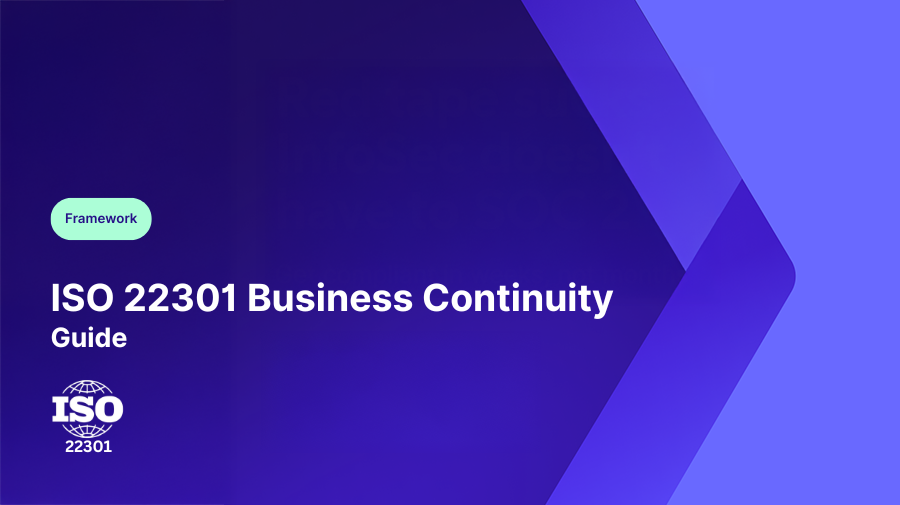Define scope and risks
Set the BCMS scope, roles, BIA, risk assessment, and continuity strategy.

When operations are interrupted, every minute counts. Whether it’s a cyberattack, power outage, or supply chain disruption, your company’s ability to recover quickly determines how much it costs; and how much trust you retain. ISO 22301 gives organizations a structured way to prepare for the unexpected through a Business Continuity Management System (BCMS). It is one of the most recognised international standards for resilience and recovery planning.
This guide explains what ISO 22301 covers, why it matters, and how to achieve certification with fewer headaches.
ISO 22301 is the international standard for Business Continuity Management Systems (BCMS). It provides a framework for identifying potential threats, assessing their impact, and creating processes that help organizations continue operating during and after disruptive events.
The standard follows the Plan>Do>Check>Act (PDCA) cycle, ensuring that continuity plans are not just written once, but continuously tested and improved. At its core, ISO 22301 helps you:
Disruptions are no longer rare. Whether caused by cyber incidents, climate events, or global supply chain shocks, they test the limits of preparedness. Without a structured continuity plan, even short interruptions can ripple across departments, delaying services and damaging reputation.
Business continuity isn’t just about IT recovery. It’s about ensuring that essential activities can continue even under pressure. Organizations that follow ISO 22301 typically report:
The standard outlines requirements for establishing, implementing, maintaining, and improving a BCMS. Key elements include:
Context and scope: define the boundaries of your continuity program and understand how internal and external factors affect it.
Leadership and policy: assign accountability, appoint a continuity manager, and secure top-level sponsorship.
Risk and business impact assessment: identify potential disruptions and quantify their effects on business functions.
Business continuity strategies: develop recovery strategies and allocate resources to maintain essential operations.
Incident response structure: create clear escalation paths, communication plans, and defined roles.
Testing and exercises: validate recovery procedures through drills and simulations.
Performance evaluation: review and improve the system based on outcomes and feedback.
Each requirement supports the same goal: to keep your organization operational, no matter what happens.
Achieving ISO 22301 certification involves several stages:
Many organizations struggle to balance documentation with practicality. Common challenges include:
Overcoming these challenges means embedding continuity into daily operations, not treating it as a compliance checkbox.
Whether you’re starting from scratch or refining existing plans, Complyance provides automation tools to manage continuity documentation, track testing schedules, and monitor corrective actions across departments.
Build resilience before disruption strikes. Book a demo with Complyance to see how we simplify ISO 22301 compliance through automation, monitoring, and evidence management.
Is ISO 22301 mandatory? No, but many regulators and clients expect certified resilience practices in critical sectors like finance, healthcare, and public infrastructure.
How long does certification take? Typically 6 to 12 months, depending on organizational size and existing preparedness.
Does ISO 22301 overlap with ISO 27001? Yes, particularly around risk management and incident response. They often complement each other within integrated management systems.
How often should I test my business continuity plan? At least annually, but ideally quarterly for critical systems or processes.
